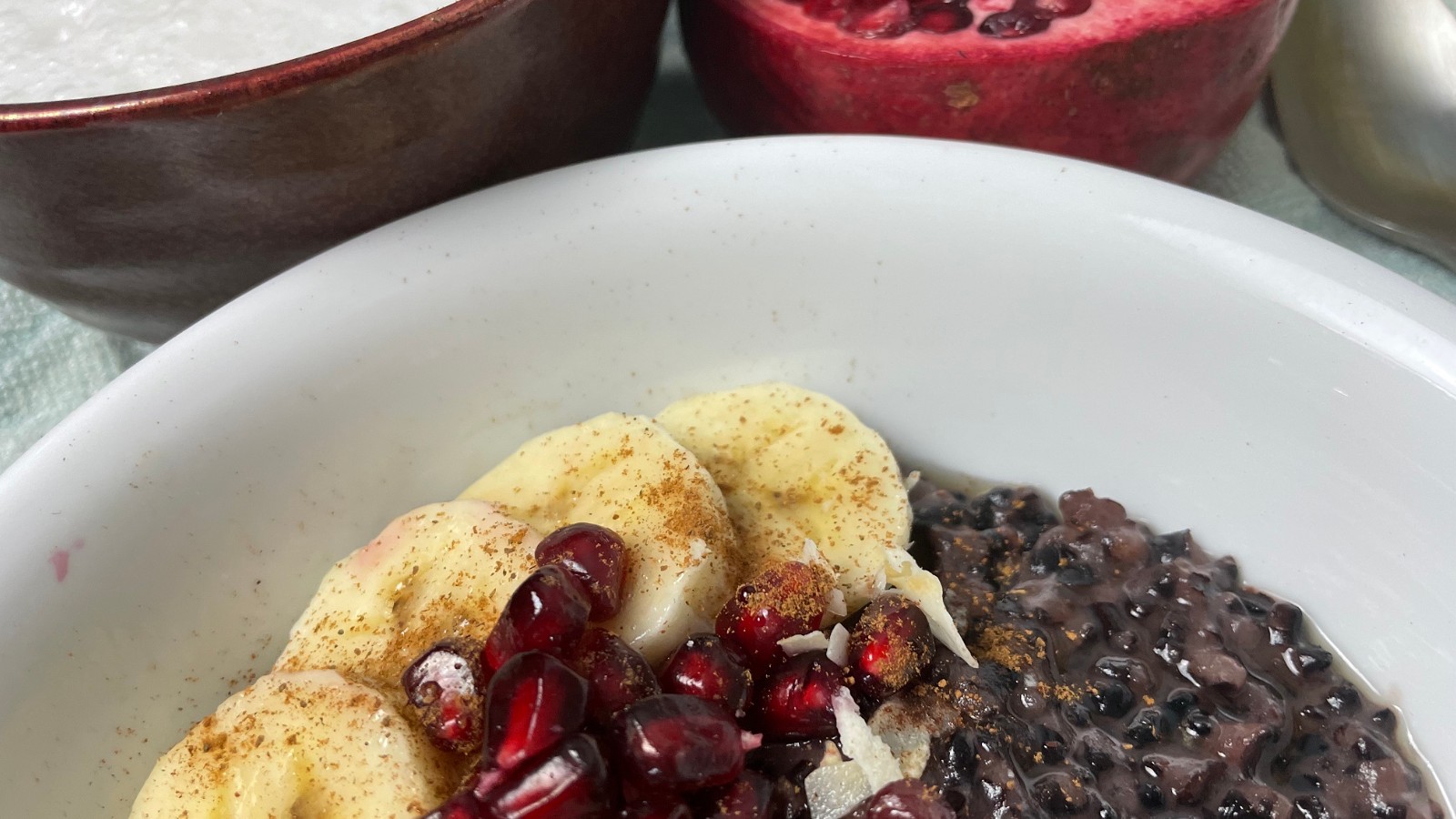Forbidden Rice Pudding
I’ve always loved rice pudding. But this is a version made with Forbidden Rice, a type of non-glutinous black rice grown in China. The deep purple color is due to the rich content of phytonutrients known as anthocyanins, found in many purple foods such as purple grapes, purple cabbage, acai berries, and purple sweet potatoes. In addition to the rich antioxidant content, black rice is also higher in protein than many other forms of rice.

Forbidden rice has a medium grain with a chewy texture. For this recipe, I cooked the rice in water, long enough for some of the grains to open (using a 2:1 ratio of water to rice, but add a little extra if needed) before I added the coconut milk in the second step. Then I simmered until the coconut milk gradually thickened and absorbed the beautiful color of the rice.
The result was a delicious pudding with a slight chewy texture, with the black rice swimming in creamy purple coconut milk!
Topped with fruit and a drizzle of Vanilla Spice coconut oil, it made for quite a beautiful breakfast.

Recipe
Ingredients:
(makes about 2 servings)
Pinch of salt (optional)
7 ounces (1/2 can) coconut milk
1 Tbs coconut sugar
1 tsp Zazi vanilla spice coconut oil per bowl
Instructions:
Boil the Forbidden rice in water with pinch of salt until softened and water is absorbed, about 20-30 minutes depending on desired texture.
Add coconut milk, coconut sugar and vanilla extract. Continue to cook for another 10-15 minutes until the coconut milk has thickened.
Place into 2 serving bowls, top with fruit. Drizzle with Vanilla Spice coconut oil and sprinkle with cinnamon.
Substitutions: You can also use ghee and brown sugar, or other oil/sweeteners if preferred.

Ayurvedic Nutrition:
This is a wonderful dish providing a sweet taste (grains, most fruits) and warming spice (cinnamon). The coconut oil is considered cooling, so pitta types can enjoy, and vata/kapha types may need to add more cinnamon or other warming spices such as nutmeg, to balance the meal.
To learn more about Ayurvedic spices read our post here:

